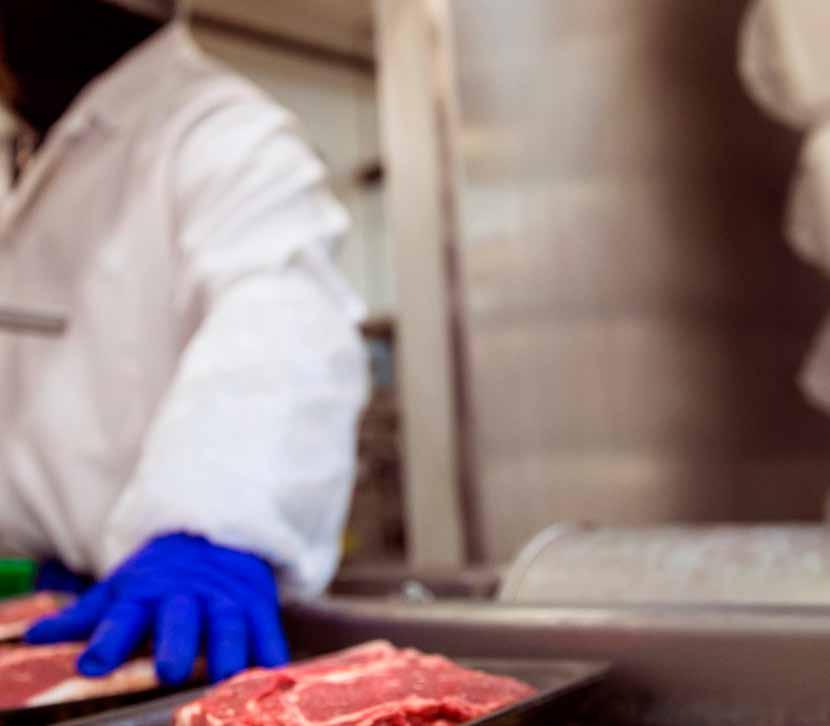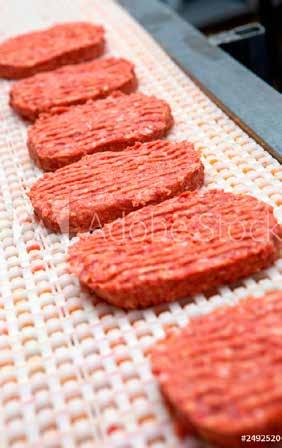
3 minute read
A good time to think about grease
If 2020 has taught us anything, it’s that contamination can come from the most unexpected sources. In a wet environment of the kind common in the meat and meat processing sectors, that source is bacterial contamination of the grease surface, which can lead to further contamination in the process.

Advertisement
Shaun Hays Marketing Communications Manager
Contaminated grease can lead to loss of production, to product recall and reputational damage, all having far-reaching consequences. Fortunately, there are easy ways to avoid it happening in your facility.
Going beyond NSF requirements
When ‘good enough’ isn’t good enough
The food sector is clearly highly regulated. There are strict controls on which products can and can’t be used in areas where food is present. The ingredients for these products are tested and audited, as are the products themselves. So, when food manufacturers use the correct, authorised products, then food safety is optimised. The NSF public health and safety organisation sets the standards and tests the products. So, choosing NSF registered products will usually ensure safety in food manufacturing environments and processes [see box-out]. However, in a sector such as meat processing, where operating conditions are harsh and contamination is virtually unavoidable, there is a clear case for going beyond NSF requirements – for the safety and protection of your customers, your output, and your brand.
Going to the Extreme
Lubricants with incidental food contact need to be NSF H1 registered. But this classification has limitations which could cause problems. In wet operating environments, bacteria are more likely to grow. This is particularly true in the meat industry, where bacteria are present on the meat itself. Give them the right conditions and even food grade grease can be a perfect breeding ground and become contaminated, leading to a range of problems. A grease contaminated by bacteria may develop a different – or even foul – smell. It could become discoloured or grow visible mould. As it deteriorates due to contamination it may harden, or conversely become runny. In either case, its lubrication performance will be severely compromised. The solution is ROCOL FOODLUBE Extreme grease, which: contains an antimicrobial compound is NSF H1 registered is ISO21469 certified (manufactured in a hygienic environment) has extreme water wash-off resistance
has excellent oxidation stability to extend re-lubrication intervals and reduce TCO
is certified Halal and Kosher.
Anti-microbe, pro-performance
A grease which becomes contaminated by bacteria is a grease with problems for your facility and your product. It could contaminate product which then has to be scrapped or, if the product reaches the marketplace, recalled. Or it could cause the grease to deteriorate, with knock-on effects on the lubricated asset.
A grease which is not lubricating effectively will lead to greater wear and tear on bearings. This in turn will lead to more frequent bearing replacement. The grease itself will also need to be replaced or replenished more often, with cost and efficiency implications. So increased noise, rattle or squealing from bearings, or a reduction in lubrication intervals, may be the result of contaminated grease. And if your solution is simply to replace the grease with more of the same, you’re not eliminating the problem but simply kicking it further down the road. The grease is highly likely to become contaminated again, to deteriorate again, and to cause the same problem again.
Contains an antimicrobial compound
But change to ROCOL FOODLUBE Extreme grease which has an additive to protect itself from bacteria and the issues due to bacterial contamination will be significantly reduced, the resulting problems less likely, and performance, efficiency and productivity will all improve.

When NSF is ‘Not Safe for Food’
Certification by the American NSF Food Safety Division is usually clear proof that a product is safe for use in a food production or processing environment. But not always. There are three important NSF classifications, but only two indicate suitability for food contact:
NSF H1 – certified for incidental contact
NSF 3H – certified as a release agent, which can involve direct food contact
NSF H2 – certified only for uses with no contact with food ROCOL FOODLUBE Extreme
is not only H1 registered, but also fits in to HACCP and GMP plans, and is manufactured in a controlled environment. This makes it one of only a small handful of manufacturers to have ISO 21469 certification.










